14.3 Threats to Earth’s Water Resources
Katherine J. Megivern
Water issues have been identified as one of the major environmental crises facing the world today. Statistics and predictions evolve, but as ballpark figures, at least one to two billion people in the world lack access to clean drinking water today. The demand for water has grown at a very fast pace in response to the rate of global population growth, and in a generation’s time, by about 2050, could increase 20 to possibly 50% from today’s levels. It is predicted that over the next two decades, the average supply of water per person will drop by a third. The number of people lacking access to clean water is predicted to increase dramatically as well, to possibly over 5 billion.
Water Scarcity, Shortage, and Availability
There is enough fresh water on Earth to supply every human being with enough drinking water. The main problems we face with regard to water is that it is unevenly distributed, polluted, mismanaged and wasted. Tony Allan, the author of Virtual Water, asserts that water follows money. This refers to the fact that rich countries and societies with money and affluence have more access to safe drinking water even when they live in regions without much water. It also means that areas with large supplies of water can still have water scarcity if they lack the financial resources to build the infrastructure to supply people with safe clean drinking water.
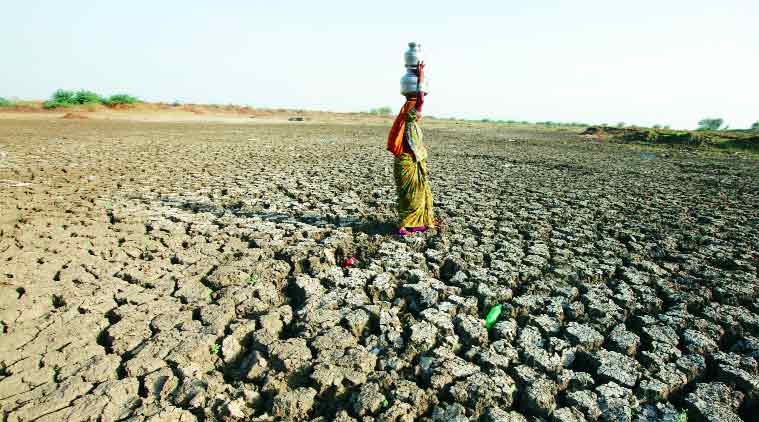
Water scarcity is caused by the demand for water being greater than the supply. Scarcity can be defined as either physical scarcity or economic scarcity.
Physical water scarcity is a situation where there is an actual shortage of water, regardless of quality or infrastructure. It is estimated that about 1.2 million people around the world are experiencing physical water scarcity.
Economic water scarcity is a condition where countries lack the financial resources and/or infrastructure to supply their citizens with reliable safe drinking water. About 1.6 billion people are experiencing economic water shortage; most of them live in less industrialized countries. For a lot of places in the world, scarcity is a transient condition that can be reduced or eliminated by installing the right infrastructure. The major problem in less industrialized countries is the lack of political, financial, and physical structures to provide water to everyone. A few rich people in these countries get the clean water while the majority of the people who cannot afford to pay for it are left out.
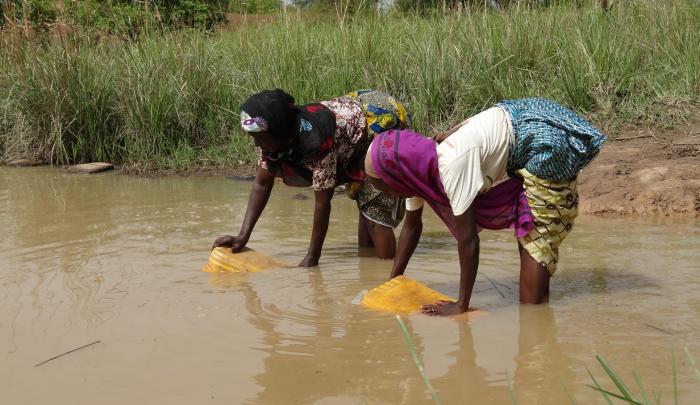
Arid regions like the Sonoran Desert face great risk of water scarcity as overuse threatens already limited supplies and climate change leads to extended periods of drought.
Backyard Geology: The Navajo Nation

Figure 14.3.3. A view of the semiarid Navajo Nation lands, Arizona.
In our own country, both physical and economic water scarcity are realities for the Navajo Nation. A consequence of this was seen when the Navajo Nation led the US in COVID infections during part of the pandemic. With a lack of piped water to many residents, hauling water made it impossible for some to take the recommended precautions. The Nation is currently in the midst of litigation to regain use of Colorado River water, a 174-year-old issue. It is an especially high-stakes battle with more people than ever feeling the effects of water shortages and cutbacks during the current drought.
Water Quality (Water Pollution)
Water pollution is a major problem facing many of our surface water and groundwater resources. Contamination can be natural due to geologic or meteorological events or anthropogenic (human- caused). Human sources of contamination can be categorized as either point-source or non-point source. Point source pollution is water pollution coming from a single point, such as from a sewage-outflow pipe.
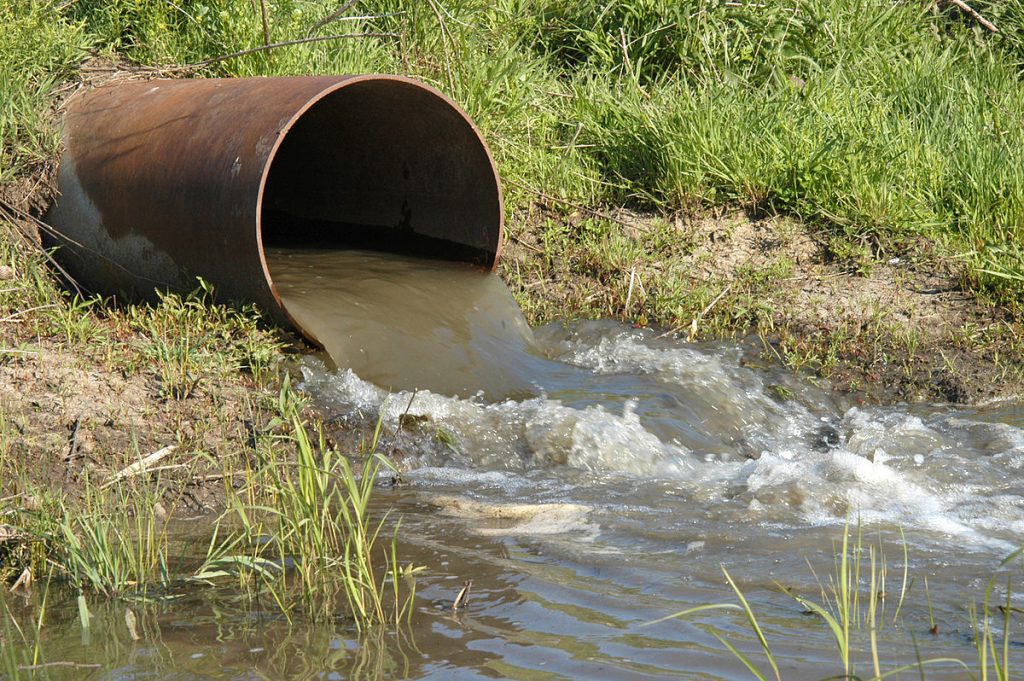
Non-point source (NPS) pollution is pollution discharged over a wide land area such as agricultural runoff or urban stormwater runoff, not from one specific location. Non-point source pollution contamination occurs when rainwater, snowmelt, or irrigation water washes off plowed fields, city streets, or suburban backyards. As this runoff moves across the land surface, it picks up soil particles and pollutants such as nutrients and pesticides.
Non-point sources of pollution are often harder to manage because the pollutants have no single distinct source that can be neither easily traced nor easily cleaned up.
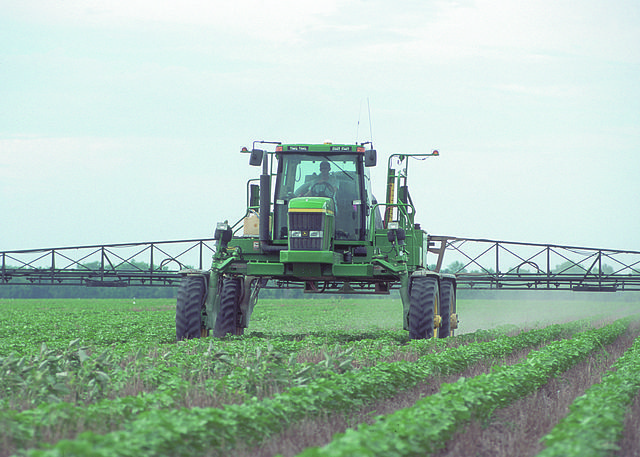
Types of Water Pollution
Physical Pollution
Physical pollution includes sediment, trash, thermal, and noise. The most significant physical pollutant is excess sediment in runoff from agricultural plots, clear-cut forests, improperly graded slopes, urban streets, and other poorly managed lands, especially when lands near streams are involved. Other physical pollutants include a variety of plastic refuse products such as packaging materials; the most pernicious of these items being ring-shaped objects that can trap or strangle fish and other aquatic fauna.
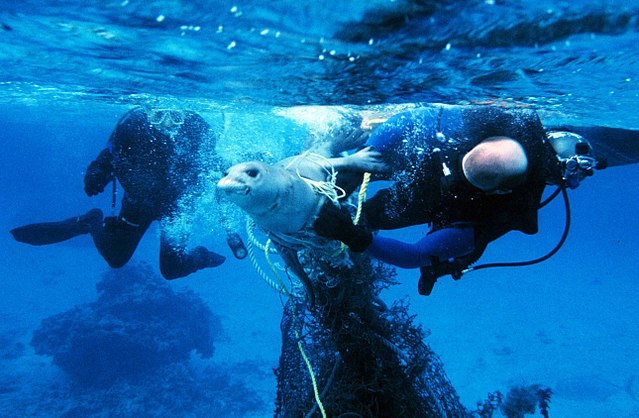
An unfortunate pollution phenomenon is the Great Pacific Garbage Patch, shown in Figure 14.3.6. The patch has two parts, and because of the ocean currents they are actually interconnected. Taking a closer look, the patches look mainly cloudy because most of the debris is microplastics. Ocean currents and winds continually change the characteristics of the concentrated debris areas. Too often referred to as islands, they are definitely not areas you could walk across.
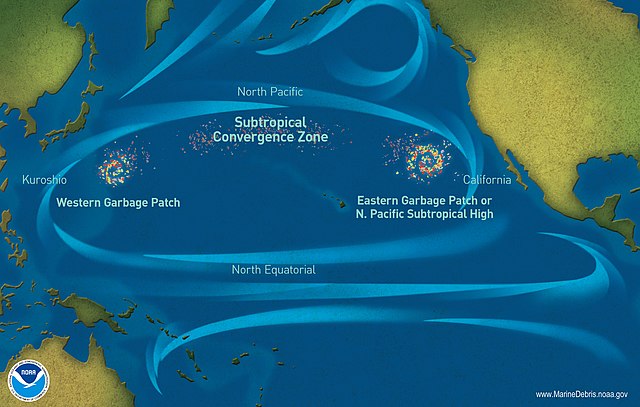
Temperature change typically affects the metabolism of aquatic fauna in a negative way and can encourage the overgrowth of algae and eutrophication. Power plants and other industrial facilities that use natural water bodies for cooling are the main sources of thermal pollution.
Noise generated under water by humans continues to increase. Sound from ships, sonar, and drilling can all negatively affect marine animals. Effects in animals include disruptions in communication, feeding, breeding, and more.
Biological Pollution
Biological pollution refers to pathogenic microorganisms and organic wastes that come from living organisms. Pathogenic microorganisms are pathogenic bacteria, viruses, and parasitic protozoa that cause diseases in humans.
Common pathogenic microbes introduced into natural water bodies are pathogens from untreated sewage, or surface runoff from intensive livestock grazing. Biological pollution is a common cause of
illness and death in less industrialized countries where population density, water scarcity and inadequate sewage treatment combine to cause widespread parasitic and bacterial diseases. At any given time, close to half the population in developing countries suffers from a waterborne illness caused by pathogenic microorganisms.
Organic wastes are also considered biological pollutants because they are derived from living organisms. These include animal waste (manure and urine) and plant debris. Major sources of organic waste include untreated sewage, industrial animal farms, and paper mills (Figure 14.3.8).
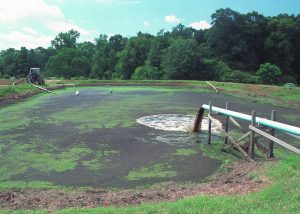
Chemical Pollution
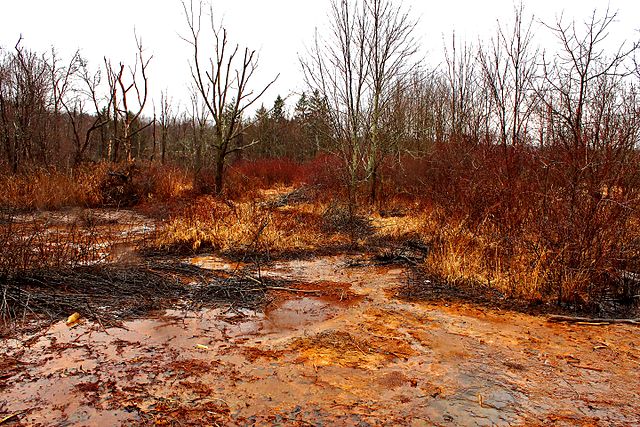
Another form of chemical pollution is radioactive waste which has a significant potential to cause harm to living things. Most radioactive pollution comes from agricultural practices such as tobacco farming, where radioactive phosphate fertilizer is used.
A More Detailed Look at Sources of Water Pollution
Inorganic Chemicals
Most of the common inorganic chemical water pollutants are produced by non-point sources, mainly intensive agriculture and high-density urban areas. Specific inorganic chemicals and their major sources are: 1) ammonium nitrate and a host of related phosphate and nitrogen compounds used in agricultural fertilizers and 2) heavy metals (present in urban runoff and mine tailings area runoff).
However, some inorganic contaminants such as chlorine and related derivatives are produced from point sources–ironically, employed in water treatment facilities. And some of the large dischargers of heavy metals to aquatic environments are fixed point
industrial plants.
High concentrations of nitrogen (N) and phosphorus (P) in water can cause eutrophication, as seen in the previous section. Runoff of fertilizers used in agriculture and in at homes gardens and golf courses is not the only source of N and P and the greenish water that results, however. Excess N and P can also be introduced in the environment when treated wastewater (laden with P and N) is dumped into a river from sewage plants and in agricultural areas where farmers allow livestock direct access to the stream.
Recall that eutrophication results in low dissolved oxygen levels in a water body. The dead zone in the Gulf of Mexico is a huge area of low dissolved oxygen (DO) that has a large negative impact on the fishing industry along the Gulf Coast near the mouth of the Mississippi River. The dead zone occurs annually when fertilizers from farm fields in the Midwest wash down the Mississippi River.
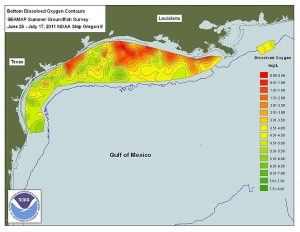 Figure 14.3.10. The dead zone in the Gulf of Mexico is an area of low dissolved oxygen (DO) due to eutrophication. DO levels below 2.0 mg/L (or ppm) may lead to fish kills.
Figure 14.3.10. The dead zone in the Gulf of Mexico is an area of low dissolved oxygen (DO) due to eutrophication. DO levels below 2.0 mg/L (or ppm) may lead to fish kills.
Organic Chemicals
Improper storage and use of automotive fluids produce common organic chemicals causing water pollution. These chemicals include methanol and ethanol (present in wiper fluid); and gasoline and oil compounds such as octane and nonane. Most of these
are considered non-point sources since their pathway to watercourses is mainly overland flow. However, leaking underground and above ground storage tanks can be considered point sources
for some of these chemicals, and even more toxic organic compounds such as perchloroethylene, commonly used in dry cleaning.
Grease and fats (such as lubrication and restaurant effluent) can be either point or non-point sources depending upon whether the restaurant releases grease into the wastewater collection system (point source) or disposes of such organics on the exterior ground surface or transports them to large landfills.
Groundwater, the Catchall
Groundwater can also become contaminated from both natural and anthropogenic sources of pollution. Naturally occurring contaminants are present in the rocks and sediments. As groundwater flows through sediments, metals such as iron and manganese are dissolved and may later be found in high concentrations in the water.
Industrial discharges, urban activities, agriculture, groundwater withdrawal, and disposal of waste all can affect groundwater quality. Contaminants from leaking fuel tanks or fuel or toxic chemical spills may enter the groundwater and contaminate the aquifer. Pesticides and fertilizers applied to lawns and crops can accumulate and migrate to the water table. Leakage from septic tanks and/or waste-disposal sites also can contaminate ground water.
A septic tank can introduce bacteria to the water, and pesticides and fertilizers that seep into farmed soil can eventually end up in water drawn from a well. Or, a well might have been placed in land that was once used as a garbage or chemical dump site.
Video 14.3.1. A quick catchy review of the water cycle, groundwater, and water pollution. (3:56)

